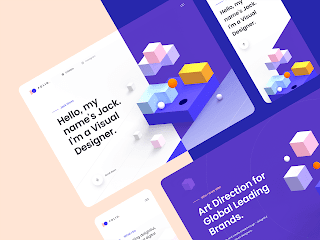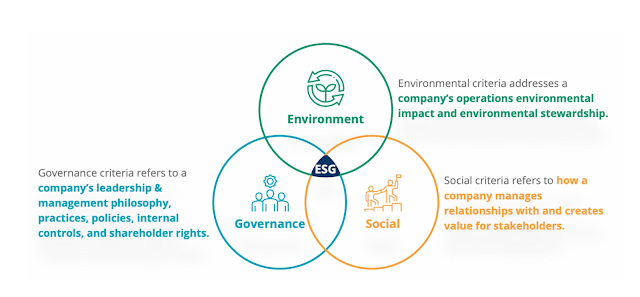Writing UX Portfolio
by: Dr. Harjinthar Singh | Short Articles
Co-Founder & Trainer/Instructor/Consultant in Digital Transformation & Sustainable Development, ESG, Design Thinking, UX, FullStack, Agile, DevOps, JIRA, SQL& NoSQL
Published Jul 8, 2022 on LinkedIn
Whether you’re just starting off or an experienced UX Designer, having a portfolio is an essential piece of the equation when it comes to building a personal brand and landing a leadership position.
But it’s easier said than done when you’re up against top design talent — and facing Recruiters and Hiring Managers who don’t have a lot of time on their hands.
So what are the portfolio essentials, and how do you make your body of work stand out from the pack? Eduardo Tovar, Senior Experience Designer at digital agency Konrad, shared some tips on how to build a UX design portfolio.
Tailor and target your UX design portfolio
Sure, you might have a versatile skill set that allows you to shift between designing slick logos, to front-end web components, to pages in a magazine. But broad isn’t best when it comes to building a portfolio that will catch the eye of an employer, Tovar says.
Instead, he recommends targeting a specific field — and figuring out your objectives, including both the type of work you want to do and the company you want to work for.
For instance, if you’re applying to a design agency focused on commercial advertising, that’s the type of work you want to showcase. If you’re aiming for a Front-End Web Designer role specialising in UX, stick to those kinds of portfolio samples.
“The type of work you want to do at a given company should be the type of work you show, or highlight,” Tovar says.
Don’t include more than five pieces
It’s tempting to overload your portfolio with every piece of work, be it a BrainStation project you were particularly proud of or a personal favourite sample of graphic design.
However, Tovar says alongside picking targeted samples tailored to the job you want, you should also only include around three to five portfolio samples — max.
“The reason is, Recruiters are moving through resumes and applications pretty quickly,” he explains. “We want something that catches our eye first and foremost. Your most relevant and beautiful solutions should be front-and-centre, and if we want to dive deeper, then we can.” In terms of structure, Tovar adds it’s important to keep things simple and accessible, so don’t bury your work among too many links or page scrolls.
It’s still key to have some basics — including your bio, contact information, social media links, and resume — but make the most of your landing page and consider putting your handful of portfolio samples right there in plain view as thumbnails.
Show your UX design process
Portfolios are typically online nowadays, and while you can easily slap up some samples of your work as images, links, or PDF files, Tovar says there’s a better way: Turning each portfolio sample into an opportunity to share the behind-the-scenes process.
As Tovar puts it, each sample can be delivered as a separate “case study.”
That means including a bit of storytelling alongside the sample, sharing the problem you were trying to solve or the businesses’ needs — the starting point, essentially, for the project.
You can also talk about the UX methodologies you used to solve that problem. “Did you conduct any surveys? Did you talk to any potential users?” Tovar suggests. “Once you’ve done some of that discovery, you would then write down some of your insights — a combination of problem statements with what you’ve learned. Tell how you’ve created a strategy.”
Instead of just an image of a final shoe design for a sportswear company, for instance, you could consider including some early sketches, a digital version of the mockup, notes about the company’s needs and the challenges involved, and finally the polished work.
“Part of the reason is companies, Recruiters, what we look for is what type of a critical thinker you are,” Tovar explains. “How do you approach problems? How do you strategise?”
Don’t use a template
You’re probably a busy person, dealing with career pressures, job applications, and, you know, regular life.
But does that mean you should cop out and buy a run-of-the-mill template for your online portfolio? Definitely not, says Tovar. And it almost goes without saying: If you’re hoping to impress the world with your design savvy, using a stock template for your portfolio is not the way to go.
“If I’m able to tell your portfolio is not a template — that it’s custom — and I start to see some of your design style and it shows in your portfolio, that’s a huge plus,” he says.
“Because you don’t only take the time and care and attention to work on projects that are work-related, but you also focus on your personal brand and presentation.”
Be personal and authentic
Gone are the days of overly-polished headshots and bland biographies. Tovar says a thoughtful “about me” section is just as important as the samples themselves, because it gives employers a sense of your personality — and whether or not you’d be a culture fit.
When it comes to your bio, keep it short and sweet, with a couple sentences highlighting your work philosophy and a few accomplishments. And don’t forget a link to your resume, where you can be more formal and technical, getting into your employment history and responsibilities.
“I also wouldn’t shy away from including a photo of yourself, but I would definitely try to make it as casual and beautiful as possible,” Tovar adds. “Beautiful in the sense that, make sure it’s a good photo, and make sure it shows some side of you as an individual.”
Like to hike, for instance? Take a photo hiking and show that side of your personality.
“I want to try to understand you as an individual before I invest the time and effort to follow up,” Tovar says.
Now, you made it, send it out to friends, even put it on LinkedIn to get a view of your work!
Good Luck.

